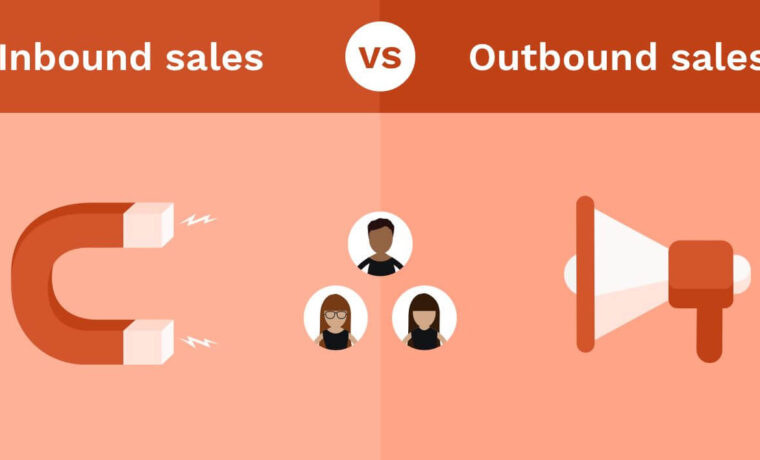In the world of sales, there are two main approaches: inbound and outbound sales. Both methods have their own set of advantages and disadvantages, and the choice of which approach to use ultimately depends on the specific needs and goals of a company. From this article, we will help you to understand the difference between inbound sales and outbound sales. Based on that, it will be possible for you to decide the most effective sales strategy that you should be following in your business.
What is inbound sales?
Inbound sales is a customer-centric approach where potential customers initiate contact with a company. This can happen through various channels such as a company’s website, social media, or through search engine optimization (SEO). Inbound sales is characterized by a pull rather than a push approach, where customers actively seek out a company’s products or services.
One of the biggest advantages of inbound sales is that it tends to attract more qualified leads. Because customers initiate contact, it is more likely that they are already interested in the company’s products or services. This means that the sales team can spend more time closing deals and less time trying to generate leads. Additionally, inbound sales often results in higher conversion rates and longer customer lifetime value.
What is outbound sales?
Outbound sales, on the other hand, is a push approach where the sales team actively reaches out to potential customers. This can be done through various channels such as cold calling, emailing, or direct mail. Outbound sales is characterized by a more aggressive approach, where the sales team is proactively trying to generate leads.
One of the biggest advantages of outbound sales is that it can reach a larger audience. Because the sales team is actively reaching out to potential customers, they have the opportunity to generate leads from a wider pool of potential customers. Additionally, outbound sales can be a great way to generate quick sales, as the sales team can directly pitch their products or services to potential customers.
However, outbound sales also has their own set of disadvantages. One of the biggest disadvantages is that it can be time-consuming and costly. Because the sales team is actively reaching out to potential customers, they often need to make a large number of calls or send a large number of emails to generate a small number of leads. Additionally, outbound sales can be less effective than inbound sales in terms of conversion rates and customer lifetime value.
When should you use inbound sales?
Inbound sales is a customer-centric approach where potential customers initiate contact with a company. This approach is best used when:
- A company has a well-established online presence: Inbound sales relies heavily on attracting potential customers through a company’s website, social media, and search engine optimization (SEO). Therefore, companies with a strong online presence are more likely to see success with inbound sales.
- A company has a clear understanding of their target audience: By understanding the specific pain points of their target audience, a company can tailor their inbound sales efforts to attract and convert potential customers.
- A company sells complex products or services: Inbound sales allows potential customers to educate themselves on the product or service before reaching out to a salesperson. This approach can be particularly effective for companies that sell complex products or services.
- A company wants to attract more qualified leads: Inbound sales tends to attract more qualified leads because customers initiate contact, they are more likely to be already interested in the company’s products or services.
- A company wants to see higher conversion rates and longer customer lifetime value: Inbound sales often results in higher conversion rates and longer customer lifetime value.
When should you use outbound sales?
Outbound sales is an effective approach for companies that have a new product or service or are looking to expand into new markets. It can be particularly useful for companies that sell simpler products or services, as it allows the sales team to generate leads quickly and efficiently. This approach is best used when:
- A company has a new product or service: Outbound sales allows the sales team to generate leads quickly and efficiently for a new product or service.
- A company is looking to expand into new markets: Outbound sales can be an effective way to generate leads and expand into new markets.
- A company sells simpler products or services: Outbound sales allows the sales team to generate leads quickly and efficiently for simpler products or services.
- A company wants to generate quick sales: Outbound sales allows the sales team to directly pitch their products or services to potential customers, resulting in quick sales.
- A company has a large target audience: Outbound sales allows the sales team to reach a larger audience, as they actively reach out to potential customers.
So which approach should a company use?
The answer is that it depends on the specific needs and goals of the company. Inbound sales is a great approach for companies that want to attract more qualified leads and have a longer customer lifetime value. Outbound sales, on the other hand, is a great approach for companies that want to generate quick sales and reach a larger audience.
In order to make the best decision, companies should conduct market research and assess their own resources. For example, if a company has a limited budget, inbound sales may be a better approach as it can be less costly. On the other hand, if a company needs to generate quick sales, outbound sales may be a better approach.
Final words
Inbound and outbound sales are two different approaches to generating leads and closing deals. Each approach has its own set of advantages and disadvantages, and the choice of which approach to use ultimately depends on the specific needs and goals of a company. Conducting market research and assessing resources can help companies make the best decision.
Looking to grow your business, smash your sales targets or book a sales training course? Here at Thompson Training and Development we offer a FREE training consultation without any obligation.















